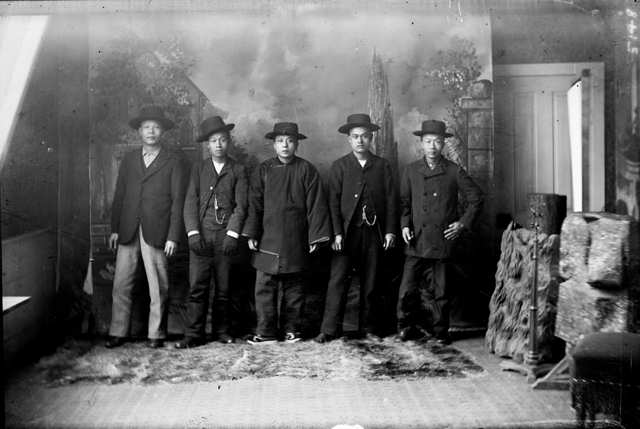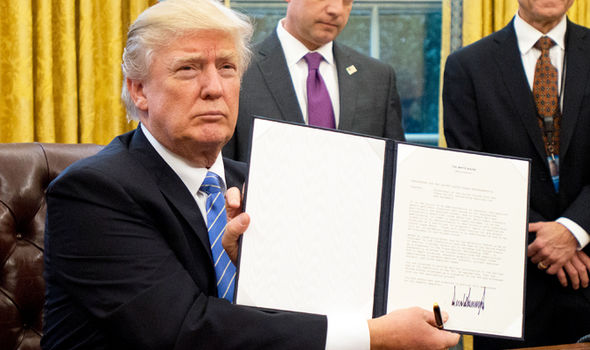Parsing Out the Huddled Masses
Historically, Trump’s executive order looks almost tame.
By Jonathan Kim, University of Texas at Dallas
On February 9, 2017, the U.S. Court of Appeals of the Ninth Circuit upheld a ruling by James L. Robart, a federal judge from Washington state who blocked key parts of the Trump ban that barred immigrants from seven predominantly Muslim countries.
In response to the court’s decision, Trump tweeted, “SEE YOU IN COURT, THE SECURITY OF OUR NATION IS AT STAKE!”
His tweet has two implications.
The first is that he intends to appeal his original ban either to the Supreme Court, which the White House recently stated that it would not soon do, or back to the Ninth Circuit Court of Appeals, which would be the more civil route.
The second implication of his tweet is that, since he had intended his ban to address an issue of “national security,” and since the culprit of the security issue is unlikely to go away anytime soon, he will probably propose a new travel ban with a firmer constitutional basis if either his appeal efforts fail or he abandons the appeal process altogether.
Regardless, he seems clear on adopting a stronger vetting system for immigrants; when asked what his new executive order could look like, Trump said, “We’re going to have very, very strong vetting. I call it extreme vetting, and we’re going very strong on security. We are going to have people coming to our country that want to be here for good reason.”
His emphasis on “national security” has tucked his supporters into a blanket of paternal safety, under which they sleep without any compunction about the miseries that may happen, with or without his hand, in the “real” world.
However, his travel ban, which was supposedly pursuant to the casting of this paternal blanket, met with universal outcry, mostly for reasons that include doubts surrounding its legality and morals.
However, for the sake of argument, and since, as the platitude goes, there are “two sides of a story,” one should be wary to mindlessly accept what is popularly thought, and, in the present case, consider whether a form of immigration ban could ever be acceptable. Perhaps a brief look into our country’s past dealings with immigration policies could help provide some insight and countervail the visceral reaction that many have shared against Trump’s travel ban.

In America, immigration laws date back to the 1790 Naturalization Act that barred non-whites from citizenship, while deportation laws in specific date back to the Alien Friends Act of 1798, which allowed the imprisonment and deportation of non-citizens who were deemed “dangerous.”
However, the first restrictive immigration statute passed in the U.S. was the Page Act of 1875, which prohibited the admission of “undesirables,” who were usually Asians forced to immigrate under work contract, or émigrés who had criminal standing in their native country.
Before the turn of the twentieth century, Congress had passed laws prohibiting polygamists, along with people with contagious diseases and, in 1882, the Chinese, whose initial ban at ten years, once elapsed, had been extended by another decade in a later law. In fact, Congress took sixty years to repeal the 1882 Chinese Exclusion Act, a feat they accomplished by passing the aptly named Chinese Exclusion Repeal Act of 1942.
The first statute to restrict immigrants based on political ideology was the Immigration Act of 1903, which shamelessly, and seemingly arbitrarily, barred the entry of epileptics, importers of prostitutes, beggars and anarchists. Some claim that Congress’ prejudice against unconventional political ideologies goes back even further; the 1798 Alien and Sedition Acts, a set of four laws that included the Alien Friends Act, allowed the government to strictly supervise anyone, especially foreigners, who might “write, print, utter, or publish . . . any false, scandalous and malicious writing” against the government.
However, there is a notable difference between the two laws. The Immigration Act of 1903 made explicitly clear that “anarchists,” an unambiguously political group, were of the four classes that were inadmissible to the country, while the Alien and Sedition Acts made no explicit claim on any political group in particular.
In 1921, Congress passed the Emergency Quota Act, which was the first law to set a numerical quota, based on nationality, on the number of immigrants that can enter the country. Because of its quota formula, which was conferred the grandiose title of “National Origins Formula,” its enactment was one of the turning points in American immigration policy.
The radical revision of the Emergency Quota Act proved to be another turning point. In 1965, Congress passed the landmark Immigration and Nationality Act of 1965, which essentially repurposed the National Origin Formula to prefer “visa categories that focused on immigrants’ skills and family relationships with citizens or U.S. residents.”
In the thirty years that followed, the number of immigrants entering the U.S. was triple the amount of those within the thirty years prior to the law’s enactment.
The Immigration and Nationality Act gave families the unprecedented ability to uproot their history from their country of birth and plant their new familial roots in America soil.
In 1986, Congress enacted the Immigration Reform and Control Act, which granted a pathway for millions of illegal immigrants, mostly from Latin America, to be legalized under certain conditions. However, in 1996 and onwards, the threat of terrorism promoted limitations on the flow of immigrants across our country’s borders.
On September 9, 2001, nineteen terrorists perpetuated the most barbaric and unsolicited attack on American society. That fated day spurred the creation of, in the words of the late Christopher Hitchens, “the hideous maelstrom that goes by the name ‘Homeland Security,’” and the passing of George W. Bush’s USA PATRIOT Act of 2001, which affirmed and broadened the government’s use of security measures like surveillance, wiretapping and auditing.
By leaving our country exposed and vulnerable, 9/11 instilled in the American people a heightened level of concern about, and perhaps a genuine fear of, the reality of terrorist activities on American soil. Such latent fear has carried to the present day, with Congress reinstating until 2019 certain provisions of the PATRIOT Act that had expired in June of 2015.
So, I now ask my readers, in retrospect and in light of current world affairs, was the intention, or rather the spirit, of Trump’s original travel ban an extreme enough departure from our country’s past dealings with immigration to not warrant an attempt in legislating another ban? In other words, assuming that it doesn’t violate human rights and is within presidential jurisdiction, could a ban on immigrants ever be acceptable in the near future?










[…] Source: Could an Immigration Ban Ever Be Acceptable? […]